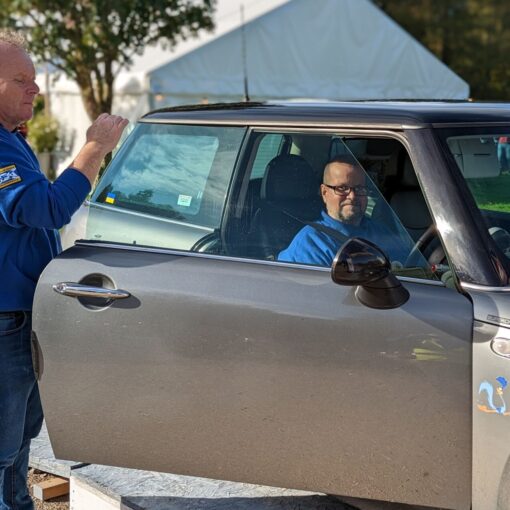Please be aware that shipment of Fuel Containers (Empty or Full) or other Dangerous Goods on Caledonian MacBrayne Ferries is only possible if you adhere to the Dangerous Goods Regulations detailed below. This is enforced by the Maritime & Coastguard Agency and Caledonian MacBrayne will not be able to allow you to cross if you do not comply.
Fuel Containers may be carried on any ferry, without going through the Dangerous Goods process, if they have been cleaned with a detergent/water and are completely empty or better still, if they are carried completely full of water.
If you intend to carry Dangerous Goods to the Island, you are required to adhere to the following procedures:
- Read ALL the information below
- Complete the Dangerous Goods Notice (a blank & a sample are available below) and FAX it to the Caledonian MacBrayne office in Tobermory on 01688-302660 at least 24 hours prior to sailing
- Pre-book the restricted Dangerous Goods sailings between Lochaline & Fishnish (07:00 & 15:15 from Lochaline and 07:20 & 15:40 from Fishnish). The sooner you do this, the more likely you are to get the crossing you want. You CANNOT take Dangerous Goods on any other crossings, e.g. Oban/Craignure
- Carry the original copy of the Dangerous Goods Notice with you when you cross, for the Purser on board to sign
- Mark the vehicle with the proper placards – see below for details
- Keep the Dangerous Goods in U.N. Approved containers, appropriately marked, for shipment.
Dangerous Goods & Shipping Regulations
Examples of items that are classed as Dangerous Goods are: petrol, diesel, kerosene, paraffin, gas oil, etc.
All shipments of Dangerous Goods by sea are strictly governed by The Merchant Shipping (Carriage of Dangerous Goods and Marine Pollutants) Regulations 1997 and enforced by the Maritime & Coastguard Agency (MCA). All shipments of Dangerous Goods must be accompanied by a Dangerous Goods Notice (DGN), and Caledonian MacBrayne will only accept the DGN produced by the Simpler Trade Procedures Board (SITPRO) in conjunction with the FTA. This is available for download below.
 Dangerous Goods Notice – download this form & complete it before faxing to Caledonian MacBrayne
Dangerous Goods Notice – download this form & complete it before faxing to Caledonian MacBrayne Sample Dangerous Goods Notice – so you can see how to complete the form above
Sample Dangerous Goods Notice – so you can see how to complete the form above
| This file is an Adobe Acrobat (.pdf) file. If you can't open the file, you may need to download and install the free of charge Adobe Acrobat Reader. This can be obtained from Adobe by clicking HERE. |
As well as a declaration of the goods being carried, vehicles should display placards on both sides and the rear of the vehicle, corresponding to the label for the class of goods being carried. These placards are diamond in shape and are 250mm x 250mm (approx 10” x 10”) in size. If more than one class of Dangerous Goods are being carried, the vehicle should display placards for each class or subsidiary class. Placards are available from various suppliers including:
- Signs & Labels Ltd. 0800-132323 http://www.safetyshop.com/
- Seton Ltd. 0800-585501 http://www.seton.co.uk/
The placards for petrol (or other class 3 flammable liquids) look like this:

For the 3 placards on the outside of the vehicle, these should be 250mm x 250mm (cost ~£3 each)
For labels for fuel cans, they should be 100mm x 100mm (cost ~£2 each)
Vehicles over 3.5 tonnes GVM carrying Dangerous Goods must be fitted with lashing points on all routes and vehicles not complying with any of the above regulations will be refused shipment.



